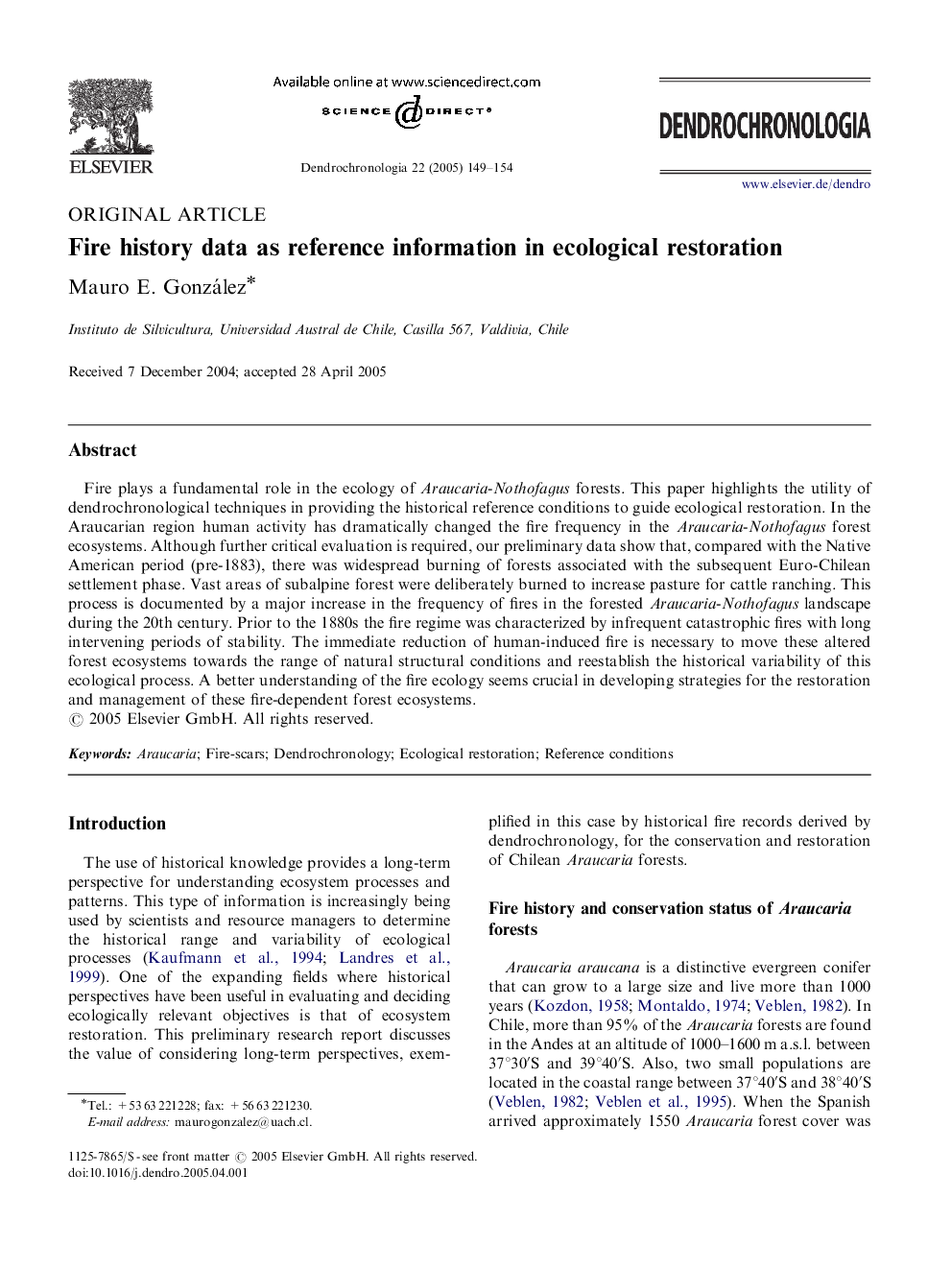| Article ID | Journal | Published Year | Pages | File Type |
|---|---|---|---|---|
| 10250288 | Dendrochronologia | 2005 | 6 Pages |
Abstract
Fire plays a fundamental role in the ecology of Araucaria-Nothofagus forests. This paper highlights the utility of dendrochronological techniques in providing the historical reference conditions to guide ecological restoration. In the Araucarian region human activity has dramatically changed the fire frequency in the Araucaria-Nothofagus forest ecosystems. Although further critical evaluation is required, our preliminary data show that, compared with the Native American period (pre-1883), there was widespread burning of forests associated with the subsequent Euro-Chilean settlement phase. Vast areas of subalpine forest were deliberately burned to increase pasture for cattle ranching. This process is documented by a major increase in the frequency of fires in the forested Araucaria-Nothofagus landscape during the 20th century. Prior to the 1880s the fire regime was characterized by infrequent catastrophic fires with long intervening periods of stability. The immediate reduction of human-induced fire is necessary to move these altered forest ecosystems towards the range of natural structural conditions and reestablish the historical variability of this ecological process. A better understanding of the fire ecology seems crucial in developing strategies for the restoration and management of these fire-dependent forest ecosystems.
Related Topics
Physical Sciences and Engineering
Earth and Planetary Sciences
Atmospheric Science
Authors
Mauro E. González,
